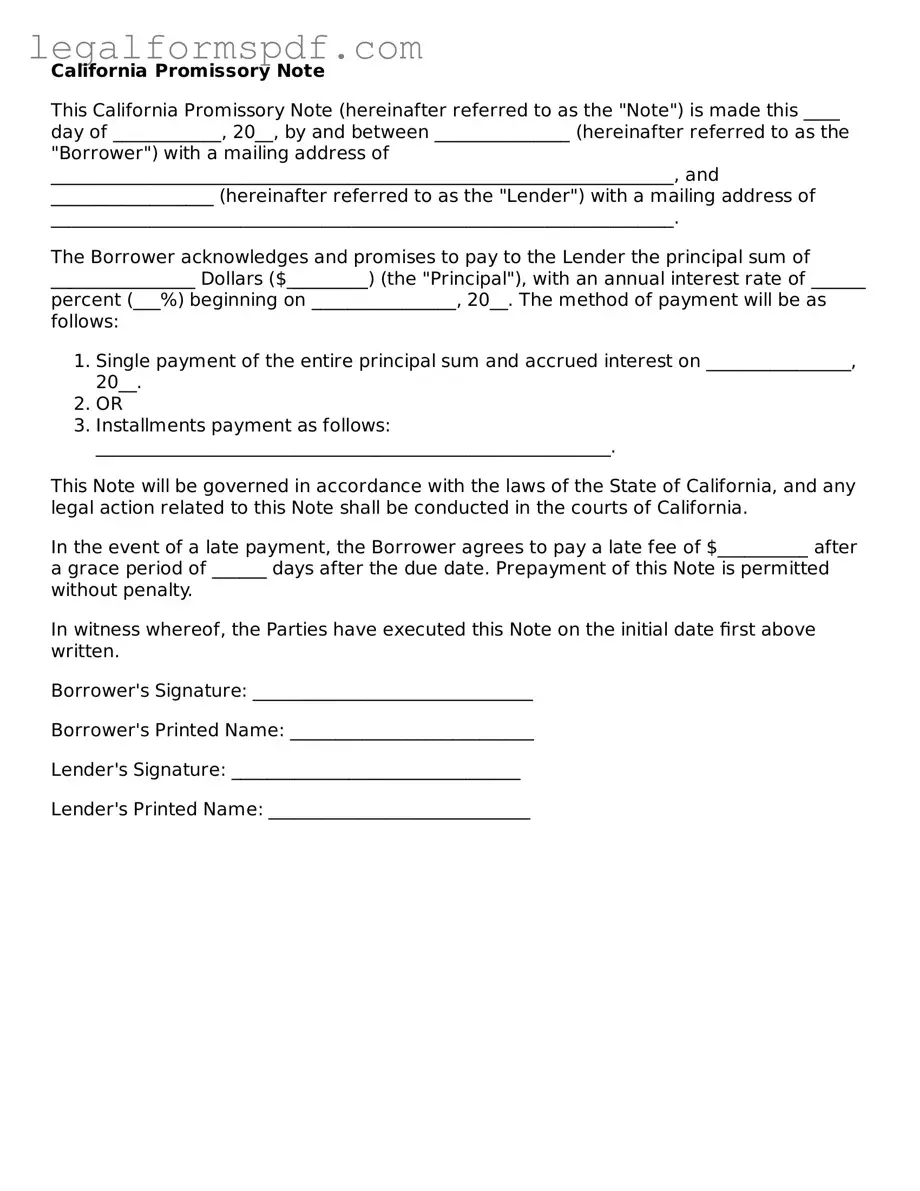The California Promissory Note form shares similarities with a Loan Agreement, primarily through their function of documenting the terms and conditions under which money is borrowed and repaid. Both outline the amount loaned, interest rates, repayment schedule, and the consequences of defaulting. The key difference often lies in the level of detail, with loan agreements typically providing more exhaustive terms and conditions, including covenants, representations, warranties, and conditions precedents.
Similar to a Mortgage Agreement, the Promissory Note may also secure a loan through collateral, typically real estate. While the Mortgage Agreement specifically creates a lien on the property as security for the loan, a Promissory Note might mention the collateral but focuses on the borrower's promise to repay the amount. Both documents are integral in real estate transactions, ensuring the lender's interest is protected and specifying foreclosure rights in the event of non-payment.
The similarity with a Deed of Trust is evident, as both can be used in financing real property. In states where Deeds of Trust are utilized, this document, along with a Promissory Note, outlines the borrower's obligation to repay the loan, while the Deed of Trust transfers legal title to a trustee as collateral for the loan. The trustee holds the property's title until the borrower fulfills the terms of the Promissory Note, paralleling the role of collateral in both documents.
The IOU (I Owe You) is another document similar to the Promissory Note; it acknowledges that a debt exists and promises repayment. However, the IOU is typically less formal and does not detail the repayment terms, interest rates, or collateral. Despite these differences, both serve as written promises to pay a specific amount, making them foundational for personal and small-scale lending.
A Bill of Sale, while primarily confirming the transfer of ownership of goods or property from seller to buyer, shares a commonality with the Promissory Note when the latter includes clauses about securing the debt with personal property. This similarity can be seen when a Promissory Note specifies items as collateral, should the borrower default, reminiscent of the property mentioned in a Bill of Sale.
Comparatively, an Installment Agreement is akin to a Promissory Note that stipulates repayment over a set period in defined amounts. Both documents outline the terms of repayment for a debt, including the schedule and amounts due at each installment. However, an Installistment Agreement might include more comprehensive details on late fees and consequences of default, similar to some Promissory Notes.
In the realm of business transactions, a Corporate Bond mirrors the Promissory Note by representing a formal commitment by the entity to repay borrowed funds with interest. Corporate Bonds, issued by companies to raise capital, detail the repayment terms, interest rates, and maturity date, akin to the essential elements of a Promissory Note. The difference primarily lies in the scale and formalities involved, with corporate bonds engaging in broader public markets.
Lastly, a Student Loan Agreement, tailored specifically for educational borrowing, aligns closely with a Promissory Note in its promise of repayment under defined terms. Both outline the amount borrowed, interest rate, repayment schedule, and consequences if the borrower fails to comply with the terms. The specificity of the Student Loan Agreement to educational expenses represents a more focused application of the general principles underpinning a Promissory Note.
